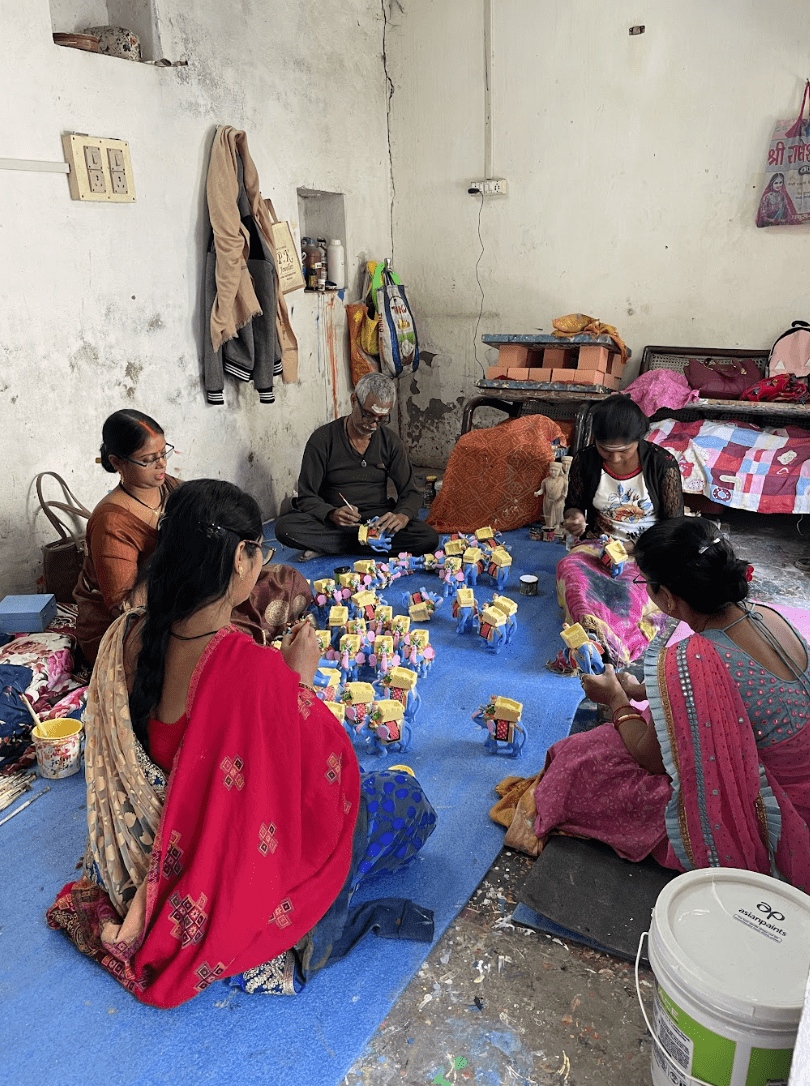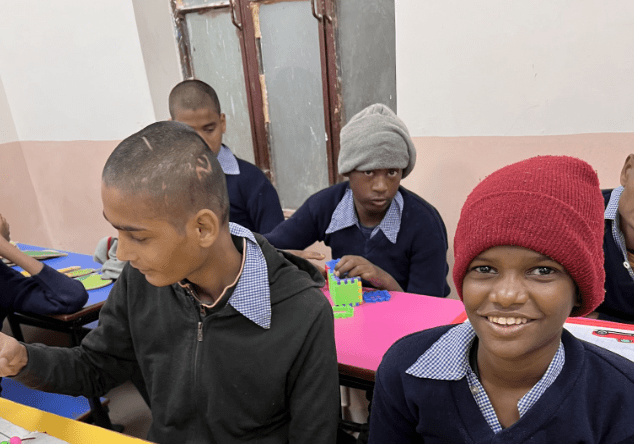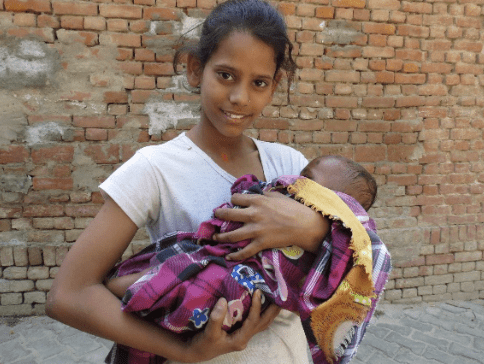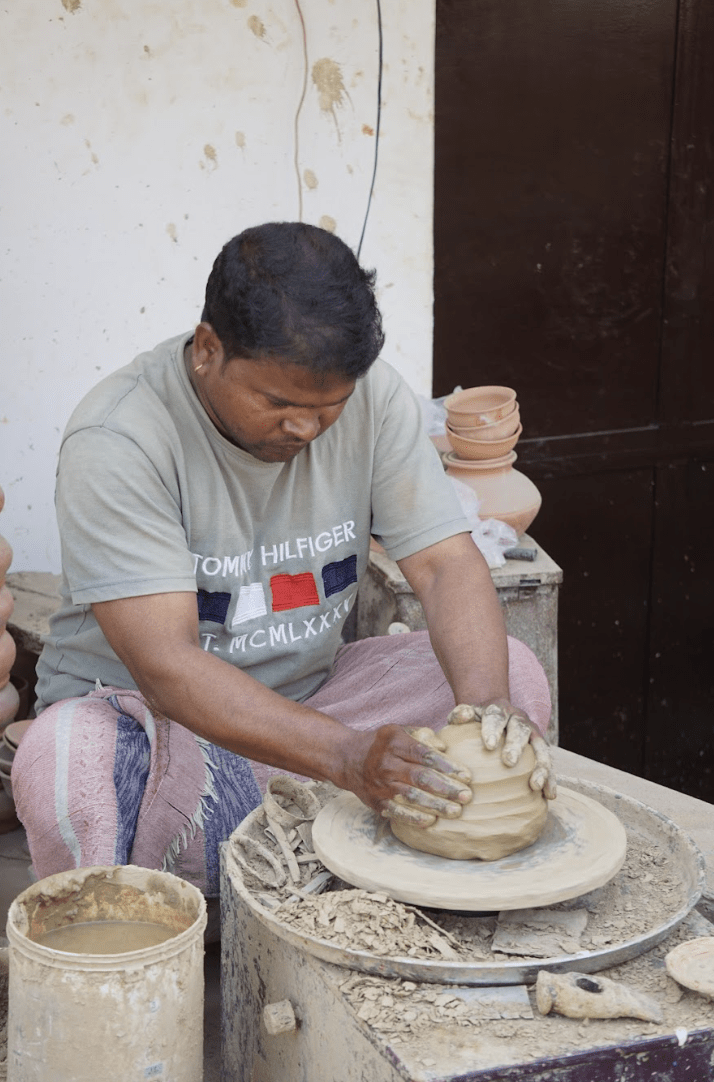CURRICULAR UNIT developed by Prof. Prof. Iryna Babik, Department of Psychological Science, Boise State University
- Introduction
This curricular unit could be used for undergraduate university students (e.g., courses like “Children and Families: Multicultural Perspectives”, “Cross-Cultural Psychology”, and “Social Psychology”). In this curricular unit, students will explore applied aspects of cross-cultural psychology by conducting an in-depth comparative study of the U.S vs. Indian culture and psychology. This unit will emphasize the importance of understanding cultural context in psychological processes and will encourage students to explore the ways culture influences societal norms, individual behavior, and interpersonal relationships.
For two weeks (four 1.5-hour classes), students will actively participate in a comparative study between the two cultures (U.S. and India). First, working in small groups of 4-5, students will review Hofstede cultural dimensions and compare/contrast those between the U.S., India, and China (another large industrial Asian country with collectivistic orientation). Second, students will be exposed to previous research comparing cultural values and parental beliefs and practices between the U.S. and India. Third, students will look at the authentic interview responses provided by the U.S. and Indian parents about their parental beliefs and practices and try to identify some similarities and differences between the two cultures. Fourth, students will analyze their findings on parental beliefs and practices in the light of cultural differences illuminated by Hofstede cultural dimensions.
 Such a hands-on approach will not only enhance students’ research skills but also provide real-world insights into how psychological principles can be applied in specific cultural contexts. The culmination of the project will be a series of presentations in which students from each team would share their findings while offering a comparative analysis that should reflect their deepened understanding of the effect of culture on people’s behavior. This unit aims to foster critical thinking, enhance cultural sensitivity, and prepare students for a globalized world in which cross-cultural interactions are very common.
Such a hands-on approach will not only enhance students’ research skills but also provide real-world insights into how psychological principles can be applied in specific cultural contexts. The culmination of the project will be a series of presentations in which students from each team would share their findings while offering a comparative analysis that should reflect their deepened understanding of the effect of culture on people’s behavior. This unit aims to foster critical thinking, enhance cultural sensitivity, and prepare students for a globalized world in which cross-cultural interactions are very common.
- Learning Objectives
At the end of this unit, students are expected to be able to: 1) list Hofstede cultural dimensions; 2) specify similarities and differences in Hofstede cultural dimensions between the U.S., India, and China; 3) identify similarities and differences in parental beliefs and practices between parents in the U.S. and India; and 4) relate cultural values to parental beliefs and practices for the U.S. and Indian cultures.
On a more global scheme, as a results of this curricular unit, students are expected to be able to: 1) analyze cultural influences on behavior – students will demonstrate the ability to analyze the ways culture influences human behavior and mental processes while using specific examples from diverse cultures;
2)conduct cross-cultural research – students will learn to design and conduct basic cross-cultural research, demonstrating an understanding of ethical considerations and methodological challenges in this domain; and 3) develop cultural sensitivity – students will develop sensitivity and respect for cultural differences in psychological practices and research.
- Projects
3.1. Project 1
First, students review Hofstede’s cultural dimensions theory that provides a framework for understanding how the culture of a society impacts the behaviors, values, and attitudes of its members. The theory identifies six dimensions of culture:
1) power distance – this dimension reflects the degree to which less powerful members of a society accept and expect that power is distributed unequally; high power distance cultures tend to accept hierarchical order without much need for justification; low power distance cultures advocate for equal power distribution and question authority;
2) individualism vs. collectivism – individualism pertains to societies in which the ties between individuals are loose, and everyone is expected to look after themselves and their immediate family; collectivism refers to societies where people are integrated into strong, cohesive in-groups, often extended families, which protect them in exchange for loyalty;
3) masculinity vs. femininity – masculinity represents a preference for achievement, heroism, assertiveness, and material rewards for success; societies with high masculinity are competitive, while femininity represents a preference for cooperation, modesty, caring for the weak, and quality of life; feminine cultures value consensus and social support;
4) uncertainty avoidance – this dimension measures the extent to which members of a culture feel threatened by ambiguous or unknown situations and have created beliefs and institutions to avoid them; high uncertainty avoidance cultures have strict codes of behavior and are less tolerant of unorthodox behaviors and ideas, whereas low uncertainty avoidance cultures are more relaxed and open;
5) long-term vs. short-term orientation – this dimension reflects a culture’s orientation toward time; long-term orientation cultures emphasize future rewards, persistence, and thrift, while short-term orientation cultures value the past and present, emphasizing respect for tradition, social obligations, and maintaining face; and
6) indulgence vs. restraint – indulgence refers to a society that allows relatively free gratification of basic and natural human desires related to enjoying life and having fun; restraint stands for a society that suppresses gratification of needs and regulates it through strict social norms.
Second, working in small groups of 4-5 people, students are asked to discuss and make a graph reflecting their prediction of similarities and differences between the U.S., Indian, and Chinese cultures on each of Hofstede dimensions. When ready, students are asked to come to the whiteboard and draw their version of the graph (one per team). Third, the instructor shows the students the actual graph comparing the U.S., Indian, and Chinese cultures obtained with the “country comparison tool” (https://www.hofstede-insights.com/country-comparison-tool). Students are then asked to compare their prediction to the actual data and identify and discuss any inconsistencies.

Figure 1. Comparisons between the U.S., India, and China on Hofstede’s cultural dimensions produced with the “country comparison tool” (https://www.hofstede-insights.com/country-comparison-tool).
Suggested Readings:
Hofstede, G. (2011). Dimensionalizing cultures: The Hofstede model in context. Online Readings in Psychology and Culture, 2(1). https://doi.org/10.9707/2307-0919.1014
Tung, R. L., & Verbeke, A. (2010). Beyond Hofstede and GLOBE: Improving the quality of cross-cultural research. Journal of International Business Studies, 41, 1259–1274. https://doi.org/10.1057/jibs.2010.41
3.2. Project 2
Students read published scientific papers comparing cultural values and parental beliefs and practices between the U.S. and India. Next, based on previous research, students, working in the same groups, are asked to formulate specific hypotheses on similarities and differences in parental beliefs and practices between parents in the U.S. and India.
Chaudhary, N., & Shukla, S. (2015). “Children’s work is to play”: Beliefs and practices related to childhood play among Indians. In International perspectives on children’s play (pp. 146–158). Open University Press.
Ganapathy-Coleman, H. (2020). Unspoken expectations: Children’s academic achievement in the beliefs of Asian Indian Hindu parents in the United States. In Parents and caregivers across cultures: Positive development from infancy through adulthood (pp. 105–125).
Gfellner, B. M. (1990). Culture and consistency in ideal and actual child-rearing practices: A study of Canadian Indian and White parents. Journal of Comparative Family Studies, 21(3), 413–423. https://doi.org/10.3138/jcfs.21.3.413
Horwath, J., Lees, J., Sidebotham, P., Higgins, J., & Imtiaz, A. (2008). Religion, beliefs and parenting practices. A descriptive study. University of Sheffield.
Jaeger, E., MacTurk, K., & Nguyen, J. (2013). Parenting in West Indian families: Relationship to their literacy beliefs and practices. Interamerican Journal of Psychology, 47(2), 287–297.
Jambunathan, S., & Counselman, K. (2002). Parenting attitudes of Asian Indian mothers living in the United States and in India. Early Child Development and Care, 172(6), 657–662. https://doi.org/10.1080/03004430215102
Rao, N., McHale, J. P., & Pearson, E. (2003). Links between socialization goals and child‐rearing practices in Chinese and Indian mothers. Infant and Child Development, 12(5), 475–492. https://doi.org/10.1002/icd.341
Suchday, S., Santoro, A. F., Ramanayake, N., Lewin, H., & Almeida, M. (2018). Religion, spirituality, globalization reflected in life beliefs among urban Asian Indian youth. Psychology of Religion and Spirituality, 10(2), 146. https://doi.org/10.1037/rel0000161
Suppal, P. G. (1996). Ideological beliefs about family practices: Contemporary perspectives among north Indian families. International Journal of Psychology, 31(1), 29–38. https://doi.org/10.1080/002075996401197
Tuli, M. (2012). Beliefs on parenting and childhood in India. Journal of Comparative Family Studies, 43(1), 81–91. https://doi.org/10.3138/jcfs.43.1.81
3.3. Project 3
Third, students are provided with examples of answers from the U.S. and Indian parents to an interview question “What do you think is important for raising a successful child?” Students are asked to analyze the responses from both samples and outline 5-10 most common themes for each group of responses. Then, the students would have to define 3-5 similarities and differences in parental beliefs and practices between parents in the U.S. and parents in India. Finally, students are asked to conclude whether each of their proposed hypotheses (see project 2) was supported or not supported by the evidence provided in the interview responses.
Question: What do you think is important for raising a successful child?
Interview Responses from the U.S. Parents:
Participant #1: I think creating a really safe environment where the kid knows that they are loved and accepted and where there’s peace in the environment, but enough challenges that they have to work through them. I also think safety is one of the most important things.
Participant #2: I think accepting your child for who they are is important. Being mindful of what their needs are, and then providing structure for them and consistency in that structure. And then helping to develop their unique strengths as well.
Participant #3: Family support and love are most important.
Participant #4: My values are definitely raising kids on respecting people, not just elderly, but people in general, and then just being good people, you know, loving and being kind, having good morals and good judgment-making. It’s okay to make mistakes. You don’t have to be a perfectionist, but just being good and kind is like a big part of it.
Participant #5: We want them to feel loved and secure that they have a good solid family base that they can come back to when they’re struggling or unsure or when life is hard. So, there should be a connection between the kids and parents, an open line of communication that goes with loving them and accepting them for who they are, that each of them is unique and different. We also really want them to be able to make choices.
Participant #6: Children need responsibility, confidence, self-esteem.
Participant #7: I think the number one most important thing is communication and teaching them boundaries and courage. Boundaries for themselves, that people respect them and that it’s okay to say I’m not comfortable.
Participant #8: Tons of love from both parents, financial security for the children, loving, caring discipline for your children, providing them with opportunities, but not pushing them into opportunities.
Participant #9: I think it’s important for children to have consistency, right, so that they know what to expect from day to day so they have a consistent, predictable environment. I think that it’s important for them to have love and care, so to receive compassion, empathy, love.
Participant #10: Let them develop their unique interests and follow their passions, support them in their endeavors. Love them no matter what happens, good or bad.
Participant #11: I mean, first of all, you have to love them a lot more than yourself, hopefully. And you have to be patient, you have to think of what you want them to become as an adult and guide them in that way, sometimes using disciplines, sometimes using incentives.
Participant #12: I think probably giving them agency, giving them room to make choices, make mistakes, explore. I think also it’s really important for children to be in a loving home, ideally with two parents, you know, the more parents the better, right? I think the more support they can have. For me, successful child means happy and independent and confident. It doesn’t necessarily mean a great job.
Participant #13: To teach them responsibility, compassion, to teach them not to be selfish.
Participant #14: Making sure that they know that they are loved unconditionally, that they’re supported to make their own choices. That it’s okay to mess up and not be afraid to talk about your mistakes and to learn from them.
Participant #15: I think compassion is probably the most important one. I think developing trust with children is really important. In today’s world, I think a good deal of resiliency is important. I think some values are important because I think the culture doesn’t provide a lot of good ones of those.
Participant #16: Giving them room to fail. Encouraging them to find solutions for themselves through physical challenges, emotional challenges, spiritual challenges, mental challenges. I also, think that, just loving them, and just being their champion.
Participant #17: Patience, although that’s sometimes hard to come by. A sense of humor, for sure, and I think that implementing consistent structure is important.
Participant #18: I think patience, understanding, compassion. I do think it’s good to have clear expectations as well and limitations. But yes, so just a loving, compassionate relationship with your child.
Participant #19: I think two things are important: love is the biggest thing for me and discipline is the other one. And those two things sometimes feel contradictory, but if you put those together in a harmonizing way, I think those give you the best results.
Participant #20: I think structure and encouragement would be the most important things. You know, I want them to understand what the left and the right is.
Question: What do you think is important for raising a successful child?
Interview Responses from the Indian Parents:
Participant #1: I think value system is the most important thing because that helps you face adversity better. So, if you can give your children value system, then the child can face adversities better in life.
Participant #2: Provide education. If you go to school then you get a good job, and your life is much better.
Participant #3: The child should be aware of his responsibilities. And he should also learn to take responsibility. For example, it can be something very small: helping the mother with the household chores, picking up things from the supermarket, and taking care of his own things, books, exercise, notebooks, everything. Then, he will be more responsible towards things.
Participant #4: Education. Family guidance. Follow our rules. For Hindu religion rules also.
Participant #5: I guess the most important thing is proper financial resources without which you might not be able to provide the necessary education or other care that a child needs to grow up in this present society.
Participant #6: To give a good education and to raise them well is what is necessary so that when they grow up they will get a good job and be successful.
Participant #7: I think growing up with grandparents is a blessing because they introduce the child to the values and culture. Grandparents also have a lot of life experiences which they can share with grandchildren.
Participant #8: It’s important that parents fulfill all the needs of their children, so that children get good food and grow healthy. Education is also important: my boy wants to become a doctor and the girl wants to become a police officer. It is important to practice yoga and worshiping Lord Ganesha and Mata Lakshmi so that both the child’s mind and body are in control.
Participant #9: Education. Family guidance. Follow our rules. For Hindu religion rules also.
Participant #10: I think it is important to pass to your child your values and morals. And we must teach children how to be a good human being, how to be a good citizen. All kindness, all compassion should be there.
Participant #11: Child is like God to us. The most important thing in our life is our children. So, you should give them lots of love. You should sacrifice everything of ours: my property, my time, everything I have is theirs. So, if you have to be ready to sacrifice everything in your life, your sleep you should sacrifice, your rest you should sacrifice, your money you should sacrifice, even your love you should sacrifice. It is for them, our children. That is how we raise our child. Give all our time to them. Look after all their needs. See, they are never hurt. See, they live comfortably even after our life ends. They should have enough resources. So, that when we die, they should not be left alone without anything.
Participant #12: Children should be taught to respect their parents and fulfil their responsibilities. Education is also important, so they go to a good university and get a good job.
Participant #13: The discipline and values, family values, discipline and fear of God. Not fear, you can say, the faith. You have to bring them up in the fear and the love of God. And that’s when you never go wrong. When a child can never go wrong they’re always there with you. And discipline is very important also.
Participant #14: Important is the education. And also, the family, family environment, very important. If children are raised in a good environment, they get good life and respect everyone.
Participant #15: My belief for raising successful children is giving them the freedom of making decisions. So, from the childhood, they should be able to make their own decisions.
Participant #16: To take care of my children, to take care of their needs and feelings. I just spend quality time with them to make them at peace. And I try to converse, communicate the things very clearly to my children. I also explain my emotions to my children. If I’m not feeling well right now, I’ll just communicate, “Leave me alone for five minutes.”
Participant #17: Education and values. Education and values bring success. Traditional values are going to make them a better person. So, children these days usually don’t listen to elders; they are busy with computers and games, phones and all. Children need to listen to their parents so they could give them the values to respect the elders.
Participant #18: To take care of her health. To give her good education. And to give her culture.
Participant #19: I think child’s health, both mental and physical. As long as my child is able to grow, to be independent and reproduce, I would consider it success.
Participant #20: A good education, good health, and well-known about the culture and family. They should understand what is family, what is the responsibility about the families.
Working in the same groups, students are asked to reflect on their knowledge about cultural values in the U.S. and India (based on Hofstede cultural dimensions and findings from other previous research) and explain their own findings from the reviewed parental interview responses in the light of those cultural values. Each group is required to present their findings in a 10-min oral presentation in front of the class.
- Assessments
For this curricular unit, students will be assessed based on the following deliverables: 1) final project team presentation (students will also provide peer-reviews of their teammates’ contributions, and those will be considered by the instructor while assigning grades); 2) individual 3-page essay paper providing scientific background (citing previous research in an apa style) and comparative analysis of the cultural values and parental beliefs and practices between the U.S. and Indian cultures.
Rubric for the Group Presentation:
Criteria:
- Content (40 points)
- Relevance and Accuracy (20 points): Presentation content is highly relevant to the project topic, accurate, and shows a deep understanding of the subject.
- Depth of Analysis (20 points): Comprehensive analysis with well-supported arguments and thorough examination of key points.
- Organization (20 points)
- Structure (10 points): Presentation is logically structured with a clear introduction, body, and conclusion.
- Flow (10 points): Smooth transitions between sections and speakers.
- Delivery (20 points)
- Clarity and Articulation (10 points): Presenters speak clearly, confidently, and at an appropriate pace.
- Engagement (10 points): Presenters engage the audience and maintain interest throughout.
- Visual Aids (10 points)
- Quality and Relevance (5 points): Visual aids are clear, professional, and directly relevant to the content.
- Integration (5 points): Visual aids are effectively integrated into the presentation.
- Teamwork (10 points)
- Collaboration (5 points): Evident teamwork and equal participation by all members.
- Peer Reviews (5 points): Consideration of peer reviews in the final assessment.
Total: 100 points
Rubric for the Individual Essay:
Criteria:
- Content (50 points)
- Scientific Background (20 points): Provides a thorough scientific background with relevant research cited in APA style.
- Comparative Analysis (20 points): Comprehensive comparative analysis of cultural values, parental beliefs, and practices between the U.S. and Indian cultures.
- Originality and Insight (10 points): Demonstrates original thought and insightful analysis.
- Organization and Structure (20 points)
- Introduction (5 points): Clear introduction that sets the context and outlines the purpose of the essay.
- Body (10 points): Well-organized body with logical flow and coherence.
- Conclusion (5 points): Strong conclusion that summarizes key points and implications.
- Writing Quality (20 points)
- Clarity and Style (10 points): Writing is clear, concise, and engaging.
- Grammar and Mechanics (10 points): Free from grammatical errors and typos.
- Citation and References (10 points)
- APA Style (5 points): Accurate and consistent use of APA style for citations and references.
- Quality of Sources (5 points): Uses high-quality, credible sources.
Total: 100 points



